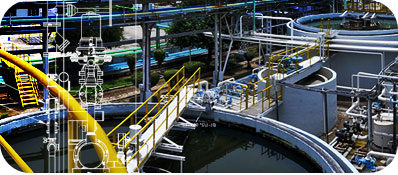
California drought necessitates water planning, but it is a best practice nationwide
Industrial users in the state consume 400 million gallons of water per day, so now is the time to take a closer look at how that water is used and where it can be conserved. Last month, Wright Process Systems prepared a white paper on the topic, and it is a great resource as you begin your water-reduction planning. Wright Process engineers can guide you through your entire water-reduction strategy, from budgeting to engineering and design, so contact us to learn more about how we can simplify the process for you.
Whether your facility is based in California or not, actively managing your water use is always a best practice that can lead to cost savings and greater efficiency in your system.
Below are a few suggestions to help you start crafting your plan*:
First steps
- Assign a responsible party to inventory in-plant water consumption and discharges
- Contact your municipal water utility to see what reduction requirements are being developed for your area and business category
- Wright Process Systems’ White Paper #2, coming out late July, will detail more thoroughly reduction possibilities for food process manufacturers
- Measure, measure, measure – trend processes via Historians or similar data gathering systems (including manual readings if needed) to look for system consumptions and demands
- Fluid Dairy - automate HTST water cut-ins with sensors to detect milk solids
- Fruit Juice – add sensors to separators and clarifiers to automate desludges, reducing soils in the bowl and improving CIP times after the run
- Powder Dairy – install spray nozzles and cleaning devices for maximum chamber/ducting wash pressure and intensity to improve CIP times after the run
- Brewery – add a dedicated CIP system for recirculated washes of the brewhouse, instead of rinsing tanks out to the floor
- Fresh Fruit and Veg – install UV treatment for rinse water, allowing for more water to be reused multiple times
- Beverage – automate carbon filter back-purges with timer and analytical instrumentation to reduce flush times
- Winery – automate filtration flushes with timer and analytical instrumentation to reduce flush times
- General – tune CIP washes with instrumentation to minimize rinses, and also install water recovery options to reuse post-rinse volumes
- Equip hoses with spring-loaded, shut-off nozzles
- Install a low volume, high pressure wash down system
- Replace equipment with water-efficient models
- Limit elective water use where possible - drought-tolerant landscaping, less frequent delivery vehicle washing, etc
- Wright Process Systems’ White Paper #3, coming out late August, and August newsletter will discuss reuse opportunities for food process manufacturers
*Sources: California Department of Water Resources (access the complete water use brochure here); Wright Process Systems (white paper on water use)

